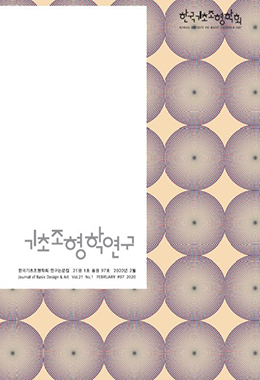중국 미술계에서 농민과 농민공(農民工, 즉, 농민노동자)주제는 주요한 메뉴인데 이는 정치체제가 사회주의인 것과 불가분하겠다. 아울러 1990년대부터 수많은 농민은 농민공으로 “전락”되었는데(현재 1억명 이상으로 추산) 이는 중국 경제개방정책의 산물이다. 농민과 농민공이 미술계에서 어떤 형상으로 등장하였는가는 상징계와 실재의 관계문제이다. 즉 농민(농민공)은 시대마다 그 정치체제요구에 따라 왜곡되고 변형되고 전유되었다. 실재로서의 농민(농민공)은 상징계에 포획되는 한에서 농민(농민공)의 얼굴을 드러낼 수 있었던 것은 그들은 재현되어지는 자이고 보여 지는 자이고 자신의 언어가 없는 자들이기 때문이다. 아울러 농민과 농민공형상에 대한 관련 연구는 진행되었으나 라캉의 실재개념을 활용하여 상징계와의 관계속에서 분석한 논문은 부재한 것만큼 본고는 창의적인 이론의 실천성이 필요하였다. 논의의 순조로운 진행을 위하여 Ⅱ장에서 실재개념과 농민(농민공)형상의 연계가능성을 이론적으로 다루었다면, 작품분석부분인 Ⅲ장 1절에서 모택동시대의 농민이 어떻게 상징계에 의하여 “행복한 형상”으로 전유되었는지를 분석하였고 2절 1, 2절에서는 1980년대에 두차례 전유된 농민형상으로 “불행한 농민형상”과 “낭만적인 농민현상”을 실재개념으로 분석하였다. 아울러 3절에서는 1990년대 이후 농민공형상을 “보여지는 것”과 “보여주는 것”으로 나누어서 분석하였는데 전자는 실재가 상징계에 어떻게 “실제”적으로 재현되어지는가의 문제와 연동된다면, 후자는 타자의 욕망이 그들(실재)에게 어떻게 투사되는가의 문제에 상응할 것이다. Ⅳ장은 Ⅲ장과 결론은 잇는 작업이다. 광의적으로 본고는 미술계에서의 타자문제를 다룬다는 점에서 단순히 농민과 농민공 주제라는 개별성이나 특수성에 머물지 아니하고, 동시대담론에서 타자로서의 보편적문제와 연결되는 것만큼의 의미부여가 가능할 것이다.
The topic on peasants and rural migrant workers in Chinese art is one of key issues, because it relates to Chinese political system, the socialism. From 1990s, a lot of peasants turn into rural migrant workers (nowadays the total number is about 100,000,000), and they are the products of Chinese Economic Reform. What kind of image do peasants and rural migrant workers come into being? It could be revealed in its relations in the Symbolic and the Real, because the image of peasants (rural migrant workers) has been twisted and transformed in different period according to different political requirements. Peasants (rural migrant workers) present illusive faces in the Symbolic, because they, who are lack of their own language, are passively represented. Although many studies have considered the image of peasants and rural migrant workers, there have been few studies examining this topic with the application of Lacanian Real. Hence this paper requires some creative ways to analyze in the connection between practice and theory. This paper has been divided into six parts: Chapter Two deals with the relation between the concept of the Real and the image of the peasants (rural migrant workers); the first part of Chapter Three investigates how the peasants are depicted as the image of happiness in the period of Mao; the second part of Chapter Three examines the images of “unhappy peasants” and “romantic peasants” from the perspective of the Real; the third part of Chapter Three analyzes the image of peasants after 1990s in the division of what is seen and what is to be seen. The image of what is seen is related to how the Real is represented in the Symbolic, while the image of what is to be seen is connected with how the desire of the Other is projected. Chapter Four and Five are extended to the conclusion. In general, this paper does not limit in analyzing the particularity and singularity of peasants and rural migrant workers in the history of Chinese art, but extends to the universality of the Other in contemporary discourse.


